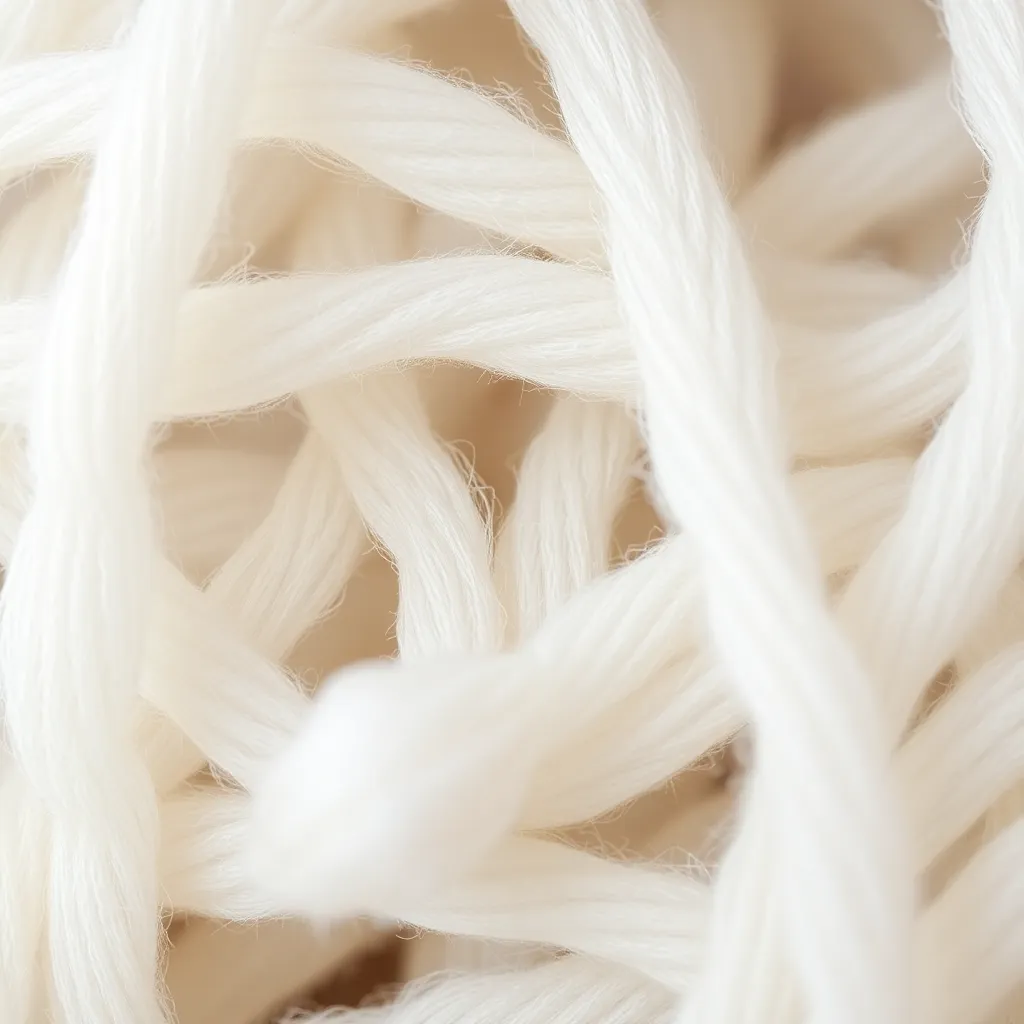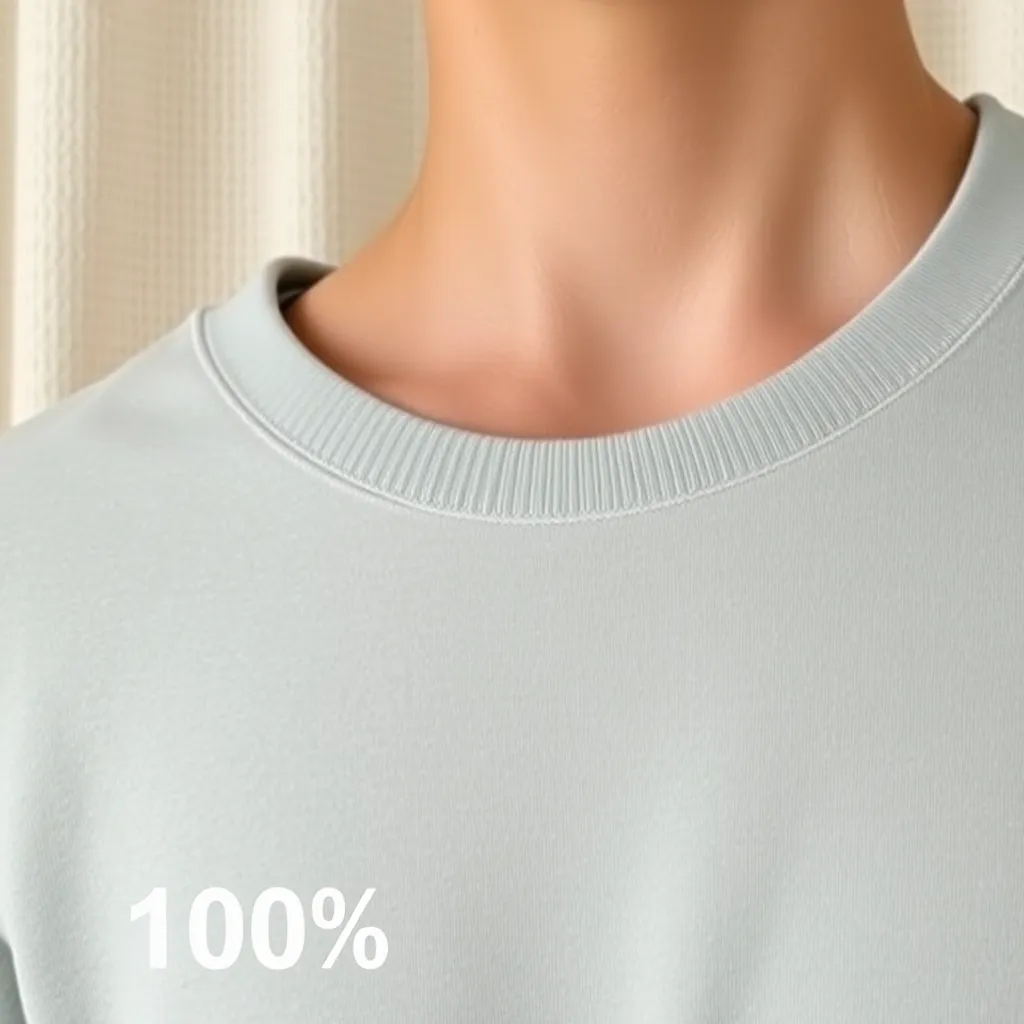The Softness Saga: Unraveling the Mystique of 100% Cotton T-Shirts [Thumbnail: A close-up of a person touching a soft cotton t-shirt]
One major factor contributing to the unparalleled comfort of 100% cotton t-shirts is the natural breathability of cotton itself. Unlike synthetic fibers, cotton allows for airflow and moisture wicking, making it an ideal choice for clothing that will be worn next to the skin. This breathability helps regulate body temperature, keeping you cool in the summer and warm in the winter, which is especially important for activewear and casual wear alike.
Cotton’s unique fiber structure also plays a significant role in its softness. The fibers have a natural crimp that creates a soft, fluffy texture when woven together. This texture is further enhanced by the way cotton fibers absorb and hold dyes, resulting in a rich, vibrant color that doesn’t fade quickly. According to the Cotton Incorporated Lifestyle Monitor Survey, 70% of consumers prefer the feel of cotton clothing, and it’s easy to see why.
In addition to its natural properties, the way cotton is processed and woven can also impact the final softness of the fabric. For example, a process called “carding” involves brushing the cotton fibers to align them in the same direction, resulting in a softer and more uniform texture. Similarly, a tighter weave can create a denser fabric that’s less prone to pilling or snagging, further enhancing the overall softness of the t-shirt.
Ultimately, the combination of cotton’s natural breathability, fiber structure, and careful processing all come together to create the uniquely comfortable sensation of wearing a 100% cotton t-shirt. Whether you’re lounging around on the weekends or running errands on a busy day, slipping into a soft cotton tee is the epitome of comfort and relaxation.
The Science of Softness
Cotton is a natural fiber that’s renowned for its breathability, durability, and – of course – softness. The secret to its softness lies in the unique structure of the cotton fibers. Unlike synthetic fibers, which can be rough and scratchy, cotton fibers have a smooth, rounded surface that gently caresses the skin.
This unique structure is due to the way cotton fibers are formed. According to the United States Department of Agriculture (USDA), cotton fibers are made up of nearly pure cellulose, a natural polymer found in plant cell walls. This cellulose is arranged in a specific spiral pattern, giving cotton its signature softness and flexibility.
The smooth surface of cotton fibers also allows them to absorb and retain moisture well, making cotton fabrics breathable and comfortable to wear. This is especially important for people with sensitive skin, as cotton’s gentle texture can help reduce irritation and discomfort.

The Role of Weaving and Knitting
The weaving process involves interlacing two sets of yarns at right angles to create a fabric with a more open structure. This openness allows for greater airflow and moisture wicking properties, making woven cotton tees ideal for warm weather or high-intensity activities. According to Cotton Incorporated, a leading authority on cotton research, woven fabrics can be engineered to have specific properties, such as softness, durability, and wrinkle resistance, by adjusting the weave pattern and yarn size.
On the other hand, knitting involves using needles to create rows of interconnected loops, resulting in a fabric with more elasticity and flexibility. Knitted cotton tees are often preferred for their comfort and fit, as they can stretch to accommodate different body types and movements. The density of knitted fabrics can be adjusted by changing the gauge of the needles, yarn weight, and stitch pattern, allowing for a range of softness levels and textures.
While both weaving and knitting can produce extremely soft cotton tees, the key difference lies in how they achieve softness. Woven fabrics tend to be softer due to their open structure, which allows for greater airflow and moisture transfer. Knitted fabrics, on the other hand, derive their softness from their flexibility and ability to conform to the body. Ultimately, the choice between woven and knitted cotton tees comes down to personal preference and intended use.
The Importance of Thread Count
When it comes to evaluating the quality of a fabric, thread count is a key metric to consider. Essentially, thread count refers to the number of threads per square inch of fabric, with higher counts typically indicating a softer and more durable material. This is because a higher thread count allows for a tighter weave, which in turn provides a more comfortable and less prone to pilling fabric.
However, it’s important to note that thread count is not the only factor at play when it comes to determining the quality of a fabric. The type and quality of the threads themselves also play a significant role. For example, fabrics made with high-quality, long-staple cotton threads are generally considered to be among the softest and most comfortable available. According to Cotton Incorporated, a leading authority on cotton, long-staple cotton fibers are stronger and softer than regular cotton fibers, making them ideal for producing high-quality fabrics.
When shopping for t-shirts, look for those made with high-quality, long-staple cotton threads for the ultimate in softness and comfort. These threads will provide a fabric that is not only gentle against the skin but also durable and resistant to wear and tear. By considering both thread count and thread quality, you can find a t-shirt that meets your needs for comfort, durability, and overall quality.

The Art of Finishing
The finishing process is a crucial step in creating a high-quality 100% cotton t-shirt. During this stage, the fabric undergoes various treatments to enhance its softness, durability, and colorfastness. These treatments can include chemical applications, such as fabric softeners and wrinkle resistors, as well as mechanical processes, like brushing and sanforizing.
A good finish can significantly impact the overall quality of the t-shirt. It can turn an already-soft tee into a truly exceptional one, making it more comfortable to wear and more resistant to wear and tear. A well-finished t-shirt will also retain its color and vibrancy wash after wash, ensuring that it remains looking its best for a longer period.
According to the American Apparel and Footwear Association (AAFA), a good finish can also improve the sustainability of a t-shirt. By enhancing the durability of the fabric, a good finish can help reduce the need for frequent replacements, which can ultimately lead to a reduction in waste and environmental impact.
Conclusion: The Softness Saga Continues
The mystique of 100% cotton t-shirts lies in their unique combination of natural fibers, expert weaving and knitting, high thread counts, and meticulous finishing. This attention to detail results in a garment that not only looks great but also feels amazing against the skin.
One of the primary reasons 100% cotton t-shirts stand out from their blended counterparts is the breathability and softness they offer. According to the Cotton Incorporated website, cotton is a natural, breathable fiber that allows for airflow and moisture wicking, making it ideal for everyday wear.
Furthermore, the high thread count of 100% cotton t-shirts contributes to their durability and resistance to wear and tear. This means that with proper care, a high-quality cotton tee can remain a staple in your wardrobe for years to come.
Ultimately, the allure of a soft, 100% cotton tee lies in its ability to provide long-lasting comfort and style. Whether you’re dressing up or dressing down, a well-made cotton t-shirt is sure to become a trusted favorite in your wardrobe.
